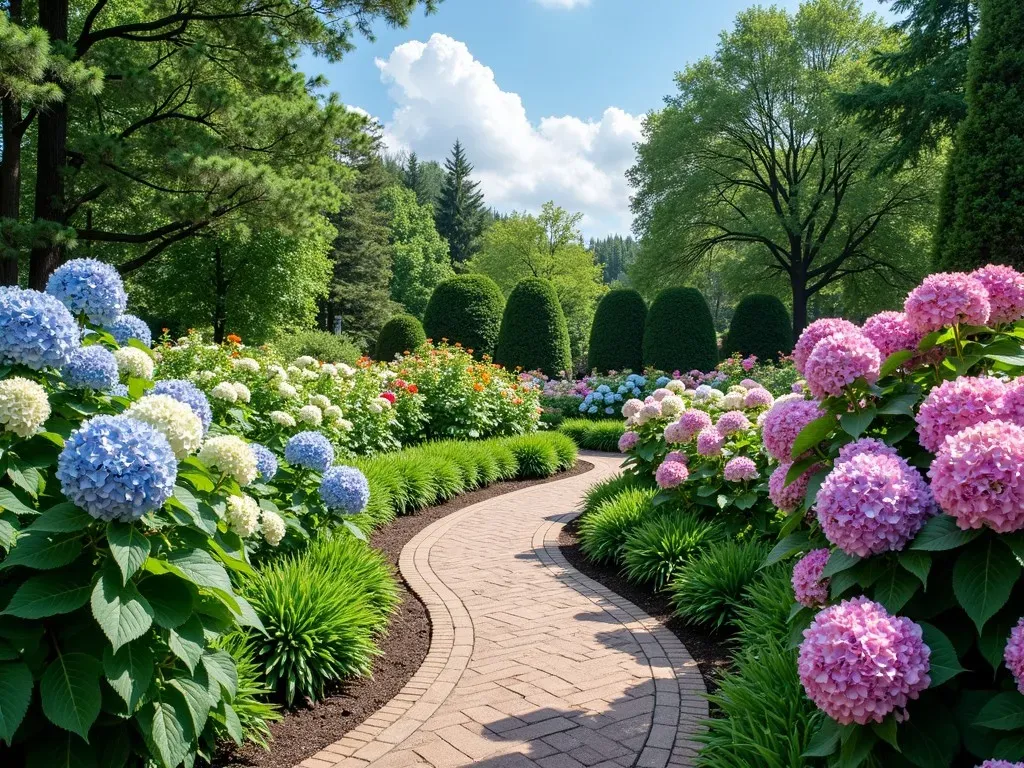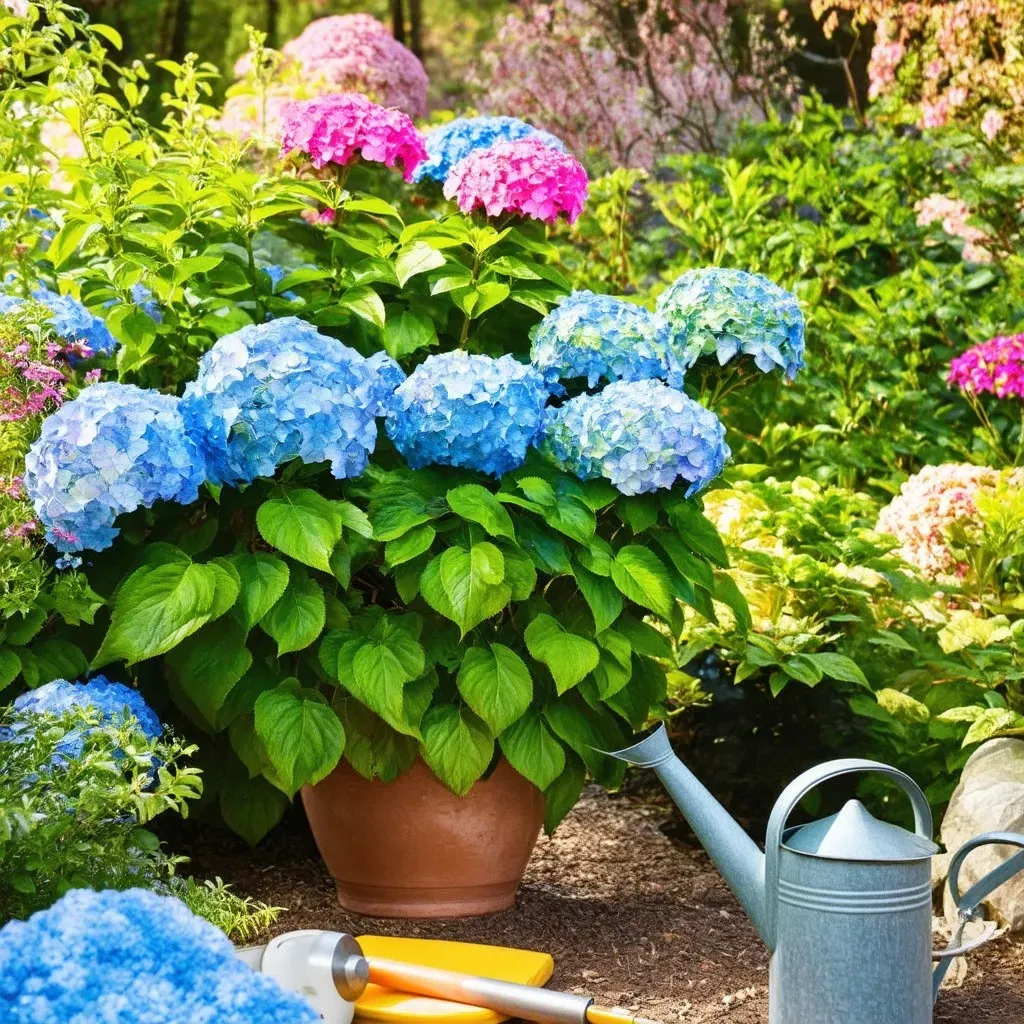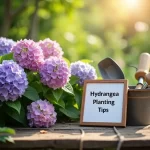hydrangea Flower Garden – The hydrangea flower garden is a blossoming spectacle that captivates gardeners and plant enthusiasts alike. Hydrangeas are renowned for their large and vibrant flowers that can infuse color into any garden setting. Whether you’re looking to create a beautiful focal point or a serene retreat, a well-planned hydrangea garden can capture attention and create an atmosphere of calm and beauty.
Choosing the Right Hydrangea Varieties for Your Garden
When establishing a hydrangea flower garden, selecting the right varieties to match your climate, soil type, and aesthetic preferences is essential. Some popular types include:
-
hydrangea macrophylla (Bigleaf Hydrangea)
- Ideal for shaded areas and known for their large, rounded blooms.
- Can produce pink, blue, or purple flowers depending on soil pH.
-
Hydrangea paniculata (Panicle Hydrangea)
- These are more tolerant to sun and can reach heights of 6 to 8 feet.
- They bloom later in the season with cone-shaped flowers in white, cream, or a light pink hue.
-
Hydrangea arborescens (Smooth Hydrangea)
- Suitable for cold climates and known for their resilience.
- Popular varieties include ‘Annabelle’, producing large white blooms.
-
Hydrangea quercifolia (Oakleaf Hydrangea)
- Features beautiful oak-shaped leaves and blooms that transition from white to pink as the season progresses.
Table 1: Comparison of Hydrangea Varieties
| Variety | Bloom Type | Sun Requirement | Height | Bloom Time |
|---|---|---|---|---|
| Bigleaf | Mophead/Lacecap | Partial shade | 3-6 feet | Summer |
| Panicle | Cone-shaped | Full sun | 6-8 feet | Late summer/fall |
| Smooth | Round | Full/Partial sun | 3-5 feet | Summer |
| Oakleaf | Conical | Partial shade | 4-6 feet | Summer |
Designing Your Hydrangea Flower Garden
Layout Considerations
When planning your hydrangea flower garden, consider the following:
-
Sunlight: Hydrangeas thrive in environments with filtered sunlight. Position them where they can receive early morning sunlight and afternoon shade.
-
Soil Preparation: Hydrangeas prefer well-draining soil rich in organic matter. A soil test can determine if you need to amend the pH to achieve your desired flower color (blue for acidic, pink for alkaline).
-
Spacing: Hydrangeas need room to grow, particularly the larger varieties. Ensure you space them appropriately—usually 3 to 4 feet apart for maximum growth potential.
List of Essential Materials for Garden Setup
- Soil testing kit
- Organic compost
- Mulch for moisture retention
- Fertilizer with balanced nutrients
- Garden stakes for taller varieties

Reference Video
Planting Your Hydrangeas
Step-by-Step Guide
-
Select the Location: Choose a location where your hydrangeas will have enough room to flourish, considering both height and width.
-
Soil Preparation: Dig a hole that is about twice as wide and as deep as the root ball of the plant. Amend the soil with compost and fertilizer.
-
Planting: Position the hydrangea in the center of the hole, ensuring that the top of the root ball is level with the soil’s surface. Fill in with soil, press gently, and water thoroughly.
-
Mulching: After planting, apply a layer of mulch to help retain moisture and suppress weeds.
-
Watering: Water newly planted hydrangeas regularly, especially during their first growing season. Deep soaking once or twice a week is typically sufficient.
| Planting Tips | Recommended Action |
|---|---|
| Watering frequency | Once or twice weekly during establishment |
| Best planting time | Spring or early fall |
| Mulching materials | Organic mulch such as wood chips |
Maintaining Your Hydrangea Flower Garden
Regular maintenance ensures the health and vibrancy of your hydrangeas. Key practices include:
-
Pruning: Depending on the variety, prune in late winter or spring. Remove dead or damaged stems and shape the bush for aesthetics.
-
Fertilization: Fertilize in early spring with a balanced fertilizer. Follow with a slow-release option during the active growth phase.
-
Pest and Disease Management: Monitor for pests like aphids and issues like powdery mildew. An organic pesticide and proper watering methods can mitigate these problems.

Frequently Asked Questions (FAQs)
How can I change the color of my hydrangeas?
Altering the color of hydrangeas primarily involves changing the soil pH. For blue blooms, aim for an acidic soil pH of 5.0 to 6.0 using aluminum sulfate. For pink flowers, adjust the pH to 6.0 or above with lime.
What is the ideal irrigation method for hydrangeas?
Hydrangeas do best with deep watering methods, particularly during hot summer months. A regular soaking that reaches the root zone encourages robust growth.
Can I grow hydrangeas in pots?
Yes, hydrangeas can thrive in pots. Use a soil mix that provides sufficient drainage, and ensure the pot has drainage holes to prevent waterlogging.
How long do hydrangeas typically bloom?
Hydrangeas generally bloom from late spring to early fall, but the specific bloom period can vary based on the variety, climate, and local weather conditions.
Should I deadhead my hydrangeas?
Deadheading hydrangeas can encourage more blooms and a neater appearance. However, research your specific variety, as some bloom on old wood and should not be pruned until after blooming.
For further insights on how to grow and care for hydrangeas, check out The Spruce.

Embracing the beauty of a hydrangea flower garden can greatly enhance your landscape. Each hydrangea variety presents unique features and charm, allowing gardeners to create a kaleidoscope of beauty. Whether you prefer a well-structured garden with uniform plants or a more informal, cottage-style planting, hydrangeas offer incredible versatility and excitement to any outdoor space.


